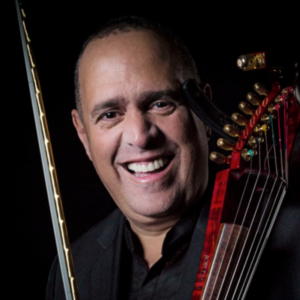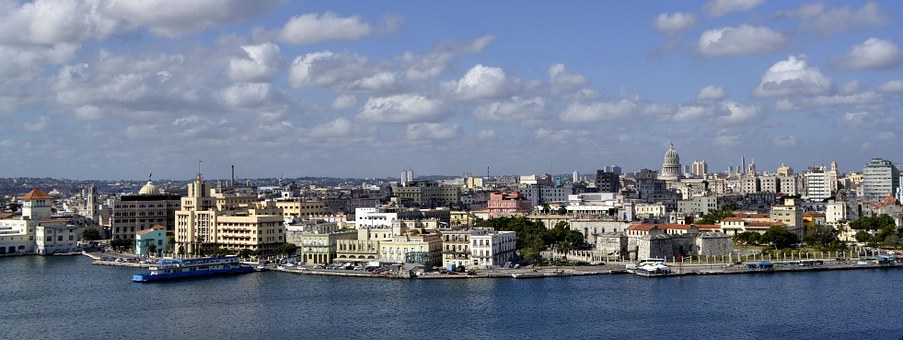 SENTIR DE CUBA: (SALSA) LOS VIOLINES DE ALFREDO DE LA FE. VIDEOS.
SENTIR DE CUBA: (SALSA) LOS VIOLINES DE ALFREDO DE LA FE. VIDEOS.
El conocido también como el “Violinista de la Salsa”, Alfredo de la Fe nació un 7 de Febrero de 1954 en La Habana, siendo hoy un violinista cubano-estadounidense establecido en Nueva York, que además vive en Colombia siendo el responsable de transformar el violín a un sonido mucho más adecuado para la Salsa y la música latina, además de haber fabricado y patentado su propio violín.
Es el primer violinista solista en actuar con una orquesta de Salsa; de la Fe ha hecho giras alrededor del mundo más de treinta veces, apareciendo en conciertos y participando en más de cien álbumes para artistas latinos como Eddie Palmieri, Tito Puente, Celia Cruz, José Alberto “El Canario”, Cheo Feliciano, Fania All-Stars, Santana 2 y Larry Harlow. Su segundo álbum como solista, Alfredo, fue lanzado en 1979, recibió una nominación al Grammy como “Mejor Álbum Latino”. Además de todo esto, De la Fe es doctor en música de la Juilliard, y uno de los mejores violinistas de la música latina, como lo demuestran sus múltiples galardones, como el Premio al Mejor Violinista, que obtuvo por 5 años consecutivos, desde 1977.
Su creativo violín, el cual creó en tiempos de la Orquesta de Eddie Palmieri (70), es eléctrico, y tiene una cuerda más que los violines acústicos o comunes.
De la Fe empezó a estudiar violín en el Amadeo Roldán Conservatory en La Habana, en 1962. Dos años más tarde, recibe una beca para ingresar al Warsaw Conservatory, en Polonia. En 1965, realizó solos de las composiciones de Mendelssohn y Chaikovski con la Metropolitan Opera Orchestra en Carnegie Hall. Una beca en Juilliard le abrió nuevas puertas. De la Fe comenzó su carrera profesional, a los doce años, cuándo cambio de música clásica a Salsa, y aceptó una invitación para unirse a la leyenda de la charanga José Fajardo’s Orchestra.
En 1972, entró en la orquesta de Eddie Palmieri. Fue integrante del grupo por un periodo muy corto, mudándose temporalmente a San Francisco, donde conoció a Santana. Regresando a Nueva York, De la Fe se unió a Típica ’73 en 1977. Dos años más tarde, lanzó su álbum debut como solista, Alfredo.
En 1980, De la Fe firmó con Fania All-Stars, y produjo treinta y dos álbumes para Fania Records. Su segundo álbum de solista, Charanga ’80, fue lanzado en el mismo año. En 1981, De la Fe se convirtió en director musical de Tito Puente’s Latin Percussion Jazz Ensemble. Al año siguiente, él confirmó su carrera en solitario, firmando con Taboga, para quien grabó el álbum Triunfo.
Se estableció en Colombia en 1983, y firmó con Philips; producto de esto, lanzó tres álbumes – ‘Made in Colombia’, ‘Dancing in the Tropics’ y ‘Alfredo de la Fe Vallenato’ – a finales de los 80. De la Fe llegó a Colombia, buscando salir de la drogadicción y no como propósito en su carrera. Allí, durante la visita del papa Juan Pablo II, en 1986, fue invitado a tocar para Su Santidad, pero no pudo asistir a la cita. Decepcionado, pues había jurado dejar sus adicciones cuando estuviese frente al papa, decidió entrar en un centro de rehabilitación. Afirma que desde finales de 1986, no ha consumido drogas.
En 1989, De la Fe firmó con Discos Fuentes. A pesar de que fue uno de los miembros de Fania All-Stars para 1995, De la Fe continuó su carrera de solista. Firmó con Sony Music en 1997. Dos años más tarde, realizó giras con su propia orquesta, apareciendo en festivales en Dinamarca, Holanda, Francia, Turquía y Bélgica, y reuniéndose con Eddie Palmieri y su orquesta para una tour europeo.
En 2002, después de varios años en Europa, Alfredo regresó de nuevo a Nueva York con su banda de Nueva York, dirigido por pianista Israel Tanenbaum. Otros músicos incluyendo el bajista Máximo Rodríguez, los percusionistas Tony Escapa y Johnny Pequeño Rivero, y el flautista Andrea Brachfeld.
Alfredo de la Fe es un claro ejemplo de que cuando se quiere salir de ese oscuro mundo, la voluntad se impone. De ese mal momento a ahora han pasado más de tres décadas y él sigue vigente. Se puede decir que el músico y su instrumento terminaron fundidos en uno solo, que cuando está en la tarima, el hombre es el instrumento y cuando baja de allí, con el deber artístico cumplido, entra en fuerte diálogo para tratar de poner a cada uno de ellos, en el sitial que le corresponde.
Discografía- Últimas Producciones.
1993 : “Con toda la salsa Alfredo de la Fe”
1995 : “La salsa de los dioses”
2000 : “Latitudes”
2006 : “Alfredo de la Fe y Fruko (La Llave de Oro)”
Somos Los Reyes Del Mundo-Triunfó · 2007
Hot to Trot- Alfredo · 1979
Excelente Amante- La Salsa Mundial de Alfredo de la Fe · 2012
Artista de sesión – Últimas Colaboraciones
1980 : “Charangueando con la Típica 73” por Típica 73
1980 : “Señor Charanga” por José Fajardo
1982 : “Encima Broadway” por Tito Puento
1997 : “Bravo” por Fania Todo-Estrellas
2001 : “Diferente” por José Alberto (El Canario)
 FEELINGS OF CUBA: (SALSA) THE VIOLINS OF ALFREDO DE LA FE. VIDEOS.
FEELINGS OF CUBA: (SALSA) THE VIOLINS OF ALFREDO DE LA FE. VIDEOS.
Also known as the Violinist of Salsa, Alfredo de la Fe was born on February 7, 1954 in Havana, today he is a Cuban-American violinist established in New York, who also lives in Colombia and is responsible for transforming the violin to a sound much more suitable for Salsa and Latin music, in addition to having manufactured and patented his own violin.
He is the first solo violinist to perform with a Salsa orchestra; de la Fe has toured the world more than thirty times, appearing in concerts and participating in more than a hundred albums for Latin artists such as Eddie Palmieri, Tito Puente, Celia Cruz, José Alberto “El Canario”, Cheo Feliciano, Fania All- Stars, Santana 2 and Larry Harlow. His second solo album, Alfredo, was released in 1979, he received a Grammy nomination as “Best Latin Album”. In addition to all this, De la Fe is a doctor of music at Juilliard, and one of the best violinists in Latin music, as evidenced by his many awards, such as the Best Violinist Award, which he won for 5 consecutive years, from 1977.
His creative violin, which he created in the days of the Eddie Palmieri Orchestra (70), is electric, and has a string more than acoustic or common violins.
De la Fe began studying violin at the Amadeo Roldán Conservatory in Havana, in 1962. Two years later, he received a scholarship to enter the Warsaw Conservatory in Poland. In 1965, he performed solo compositions by Mendelssohn and Tchaikovsky with the Metropolitan Opera Orchestra at Carnegie Hall. A scholarship at Juilliard opened new doors for him. De la Fe began his professional career at the age of twelve, when he switched from classical music to Salsa, and accepted an invitation to join the legend of the charanga José Fajardo’s Orchestra.
In 1972, he entered the orchestra of Eddie Palmieri. He was a member of the group for a very short period, moving temporarily to San Francisco, where he met Santana. Returning to New York, De la Fe joined Típica ’73 in 1977. Two years later, he released his debut solo album, Alfredo.
In 1980, De la Fe signed with Fania All-Stars, and produced thirty-two albums for Fania Records. His second solo album, Charanga ’80, was released in the same year. In 1981, De la Fe became musical director of Tito Puente’s Latin Percussion Jazz Ensemble. The following year, he confirmed his solo career, signing with Taboga, for whom he recorded the album Triunfo.
It was established in Colombia in 1983, and signed with Philips; product of this, he released three albums – ‘Made in Colombia’, ‘Dancing in the Tropics’ and ‘Alfredo de la Fe Vallenato’ – at the end of the 80’s. De la Fe came to Colombia, seeking to leave the drug addiction and not as purpose in his career. There, during the visit of Pope John Paul II, in 1986, he was invited to play for His Holiness, but was unable to attend the appointment. Disappointed, he had sworn to leave his addictions when he was in front of the pope, decided to enter a rehabilitation center. He affirms that since the end of 1986, he has not used drugs.
In 1989, De la Fe signed with Discos Fuentes. Although he was one of the members of Fania All-Stars for 1995, De la Fe continued his solo career. He signed with Sony Music in 1997. Two years later, he toured with his own orchestra, appearing at festivals in Denmark, Holland, France, Turkey and Belgium, and meeting with Eddie Palmieri and his orchestra for a European tour.
In 2002, after several years in Europe, Alfredo returned to New York with his New York band, led by pianist Israel Tanenbaum. Other musicians including bassist Máximo Rodríguez, percussionists Tony Escapa and Johnny Pequeño Rivero, and flutist Andrea Brachfeld.
Alfredo de la Fe is a clear example that when you want to leave that dark world, the will prevails. From that bad moment to now, more than three decades have passed and he is still alive. It can be said that the musician and his instrument ended up fused into one, that when he is on the stage, the man is the instrument and when he comes down from there, with the artistic duty fulfilled, he enters into a strong dialogue to try to put each one of them, in the seat that corresponds to him.
(READ DISCOGRAPHY AND LAST PERFORMANCES IN THE SPANISH SECTION (ABOVE).
Agencies/ Wiki Libre/ Internet Photos/ YouTube/ Arnoldo Varona/ www.TheCubanHistory.com
THE CUBAN HISTORY, HOLLYWOOD.







